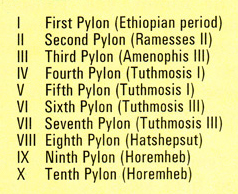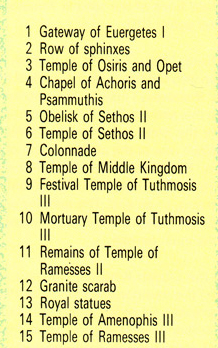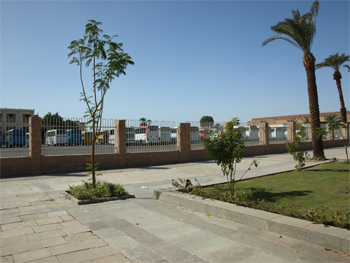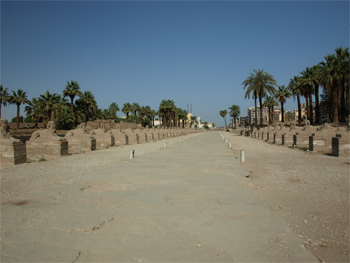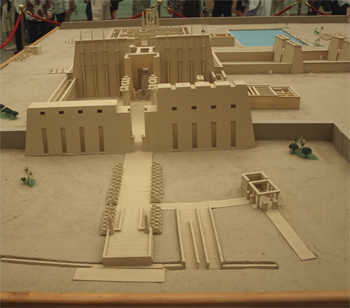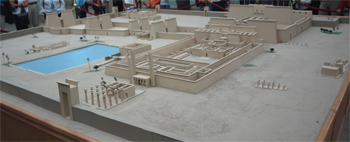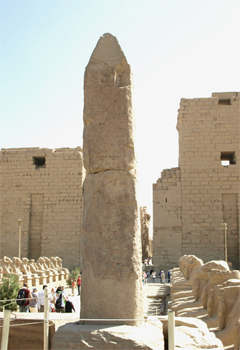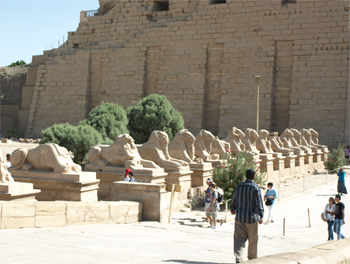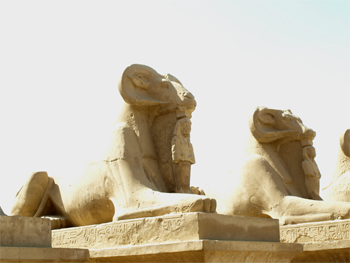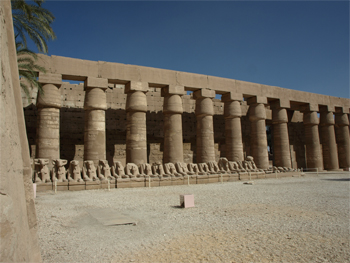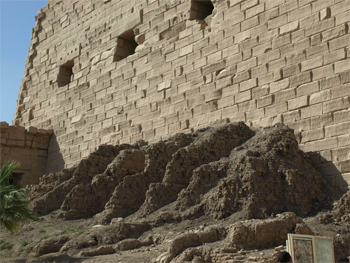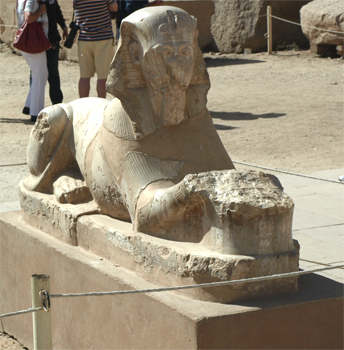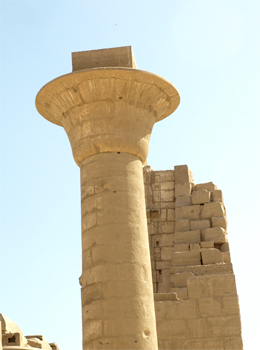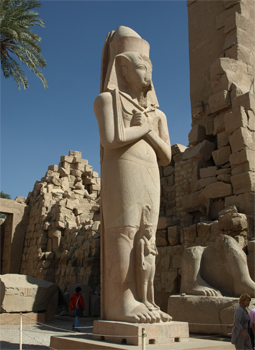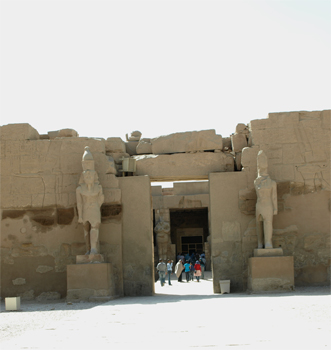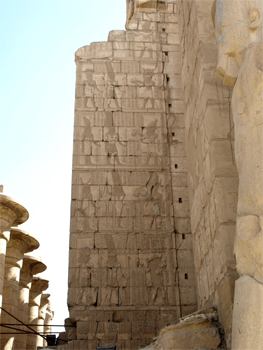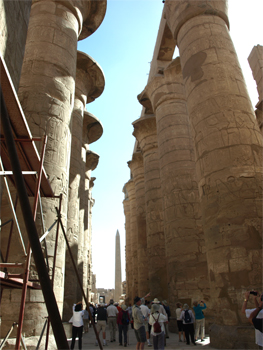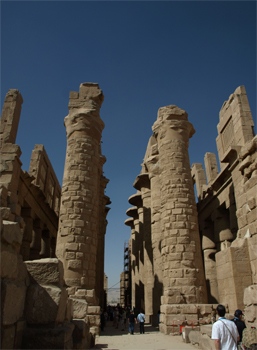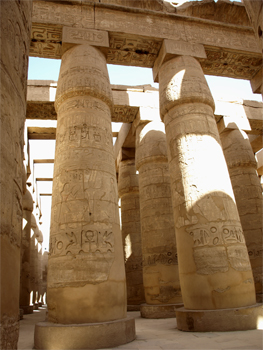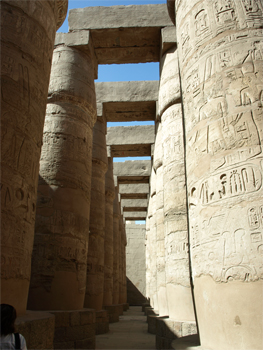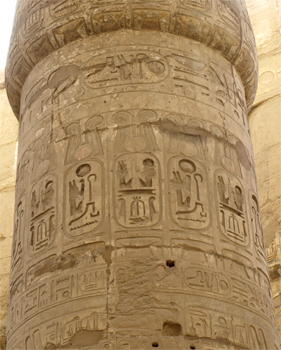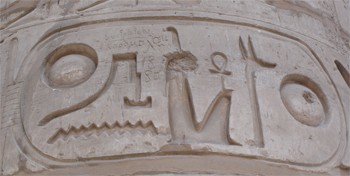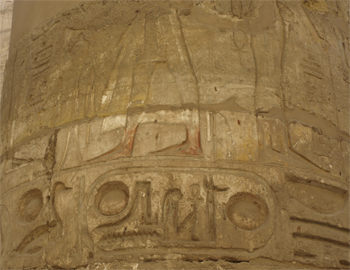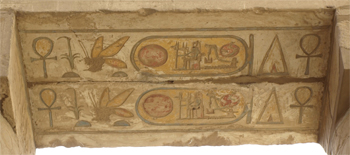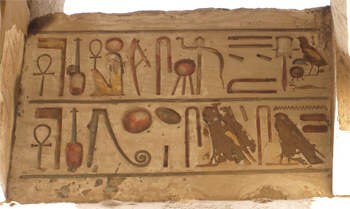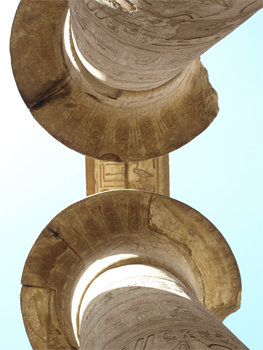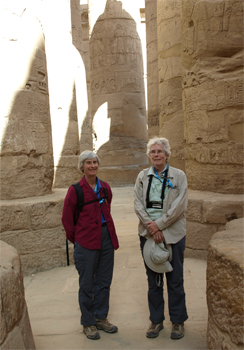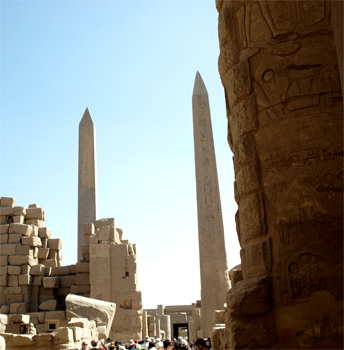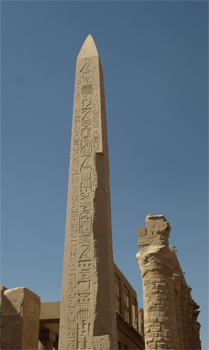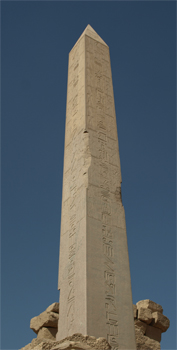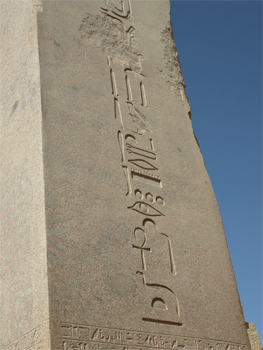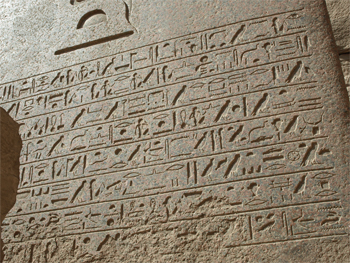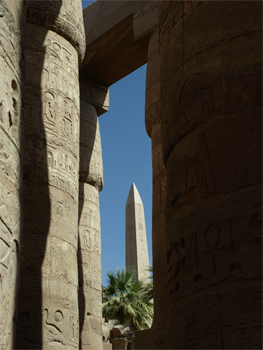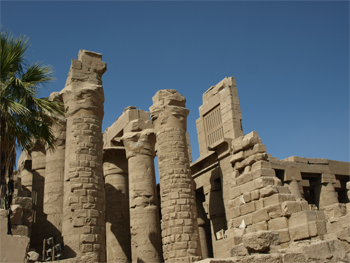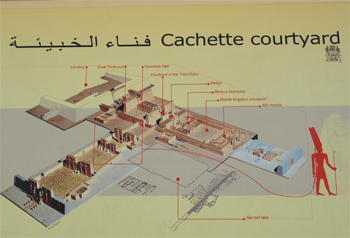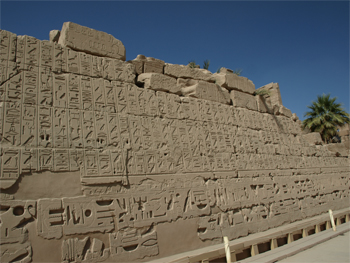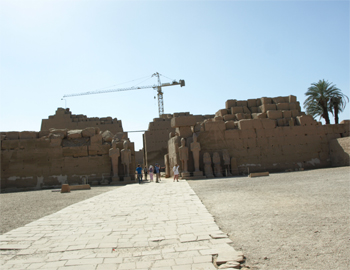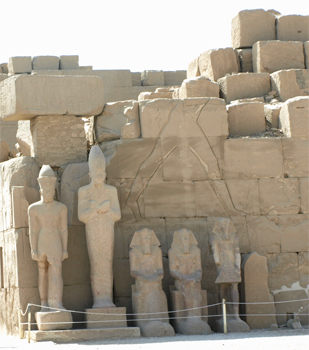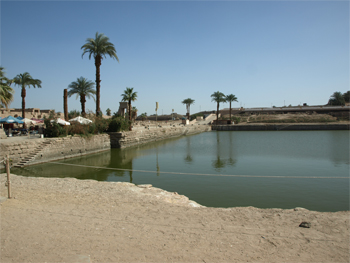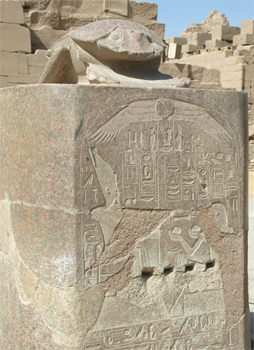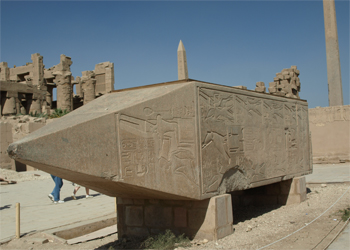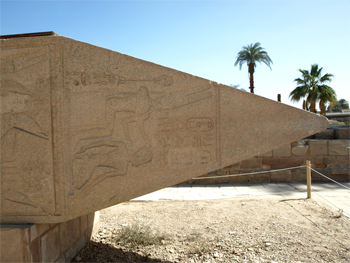Sun., 1/30/11 - On the Nile and docked at Luxor
Last night at 3:30 AM we went through a lock on the Nile that dropped us about 30 feet or more. We arrived in Luxor and docked next to two other cruise boats. After a leisurely breakfast (7:30 to 8:30 buffet) we met with the tour leaders and were given great news. Things here in Luxor were very calm and quiet with no mobs of demonstrators, so we would be able to do a quick tour of the Karnak Temple complex and Temple of Luxor.
At 11 AM we left the ship and traveled by motor coach to the Karnak Temple Complex (Karnak for short). The Karnak Temple Complex contains numerous temples and additions to temples done by many rulers. It is a HUGE, STUNNING, BEAUTIFUL complex.
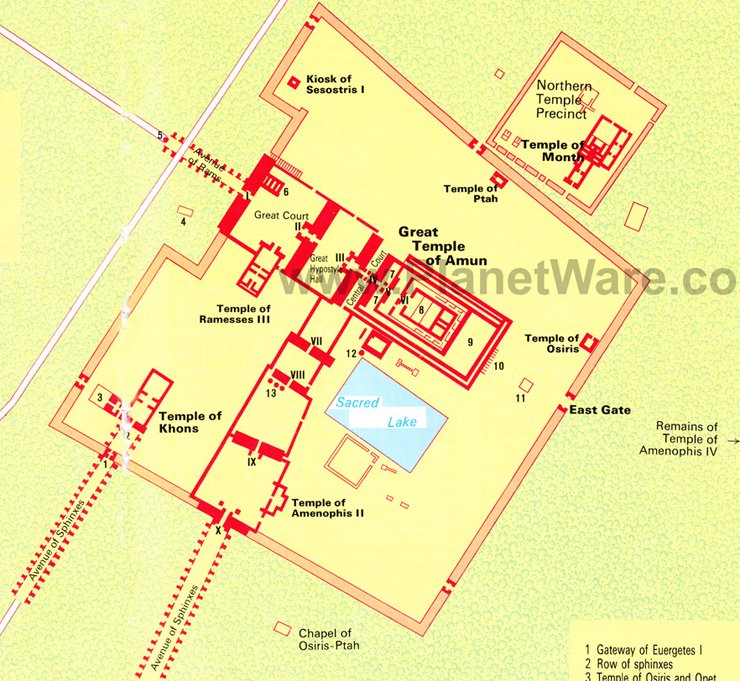 |
|
|
|
These buses came so we are sure glad we got to come |
The temples of Karnak and Luxor are connected by two rows of 800 sphinxes along a two-mile path. Archeologists continue to uncover more of the 800.
|
Model - main entrance showing row of sphinxes and the first and second pylons
|
Main entrance is at the top right |
Entrance of Euergetes I through the First Pylon of the Great Temple of Amun (Pylon is the Greek term for a monumental gateway of an Egyptian temple.) |
Obelisk of Seto II
|
Row of ram-headed, lion's body sphinxes
|
Ram-headed sphinx with Ramses II under his chin |
Beyond the first pylon is the Great Court which contains colonnades with more ram-headed sphinxes, a sphinx ordered by King Tut and made of calcite alabaster, a papyrus column, and a statue of Ramses II. Just behind the first pylon are the remains of a ramp made of mud bricks, which allowed the wall blocks to be lifted into place. The stones were quarried, put in place and then polished, sculpted or engraved, and painted. Minerals (gypsum, carbon ash, lapsis lazuli, malachite, etc) were mixed with water and a vegetable glue and then painted on the stone. Wax was then applied and made the stone absorb the color.
|
|
Colonnade and sphinxes in the great court |
Remains of ramp used to build the first pylon
|
Alabaster sphinx ordered by King Tut
|
Papyrus column (design on capital) - remains of Kiosk of Tahharka where the processional boats were kept |
Statue of Ramses II with his daughter between his feet |
Entrance to the Temple of Ramses III flanked by statues of Ramses III
|
Facade of Second Pylon
|
The Great Hypostyle Hall is beyond the second pylon. It contains 134 columns with an open flower of papyrus at the top. The columns are covered with wonderfully preserved hieroglyphs.
|
Great Hypostyle Hall - entering from the Second Pylon
|
Great Hypostyle Hall - looking back from the Third Pylon |
Great Hypostyle Hall columns
|
Great Hypostyle Hall columns |
Cartouches of Ramses II
|
One of the cartouches of Ramses II |
Note the blood-red feet of the figure above the cartouche of Ramses II
|
|
|
|
The "we were there" photo
|
Obelisks of Hatshepsut (left) and Tuthmosis |
Obelisk of Tuthmosis
|
Obelisk of Hatshepsut |
Obelisk of Hatshepsut - detail
|
Base of Obelisk of Hatshepsut |
The base of the Hatshepsut obelisk is made of pink granite from Aswan and has a point sculpted in the top to receive the depression in the obelisk when it is lowered onto the base. Only 8 of the 200 ancient obelisks remain in Egypt. The rest were stolen, given away or taken by countries for their museums. Tuthmosis IV ordered the smaller obelisk at Karnak. Three sides were finished at the quarry and the fourth was carved, polished, etc. after it was erected here.
|
|
Obelisk of Hatshepsut through hypostyle columns
|
Window into hypostyle hall |
|
Wall covered with hieroglyphs
|
Entrance to the Cachette courtyard - seventh pylon |
Statues of Ramses II and wife Nefertari
|
Sacred lake - perhaps the first swimming pool in history. It provided Nile water for the temple complex and for the queen to float her boat. Originally birds, animals, and plants thrived around the lake. |
Scarab beetle which represents the god Khepri
|
Horizontal obelisk of Hatshepsut |
Horizontal obelisk of Hatshepsut
|
Links for the Karnak Temple Complex Maps: http://www.planetware.com/map/karnak-great-temple-of-amun-map-egy-gta_e.htm http://www.planetware.com/map/temple-of-karnak-map-egy-tk_n.htm Great Temple of Amun: http://en.wikipedia.org/wiki/Karnak http://www.bluffton.edu/~sullivanm/egypt/karnak/karnak.html http://www.touregypt.net/karnak.htm
|
|
